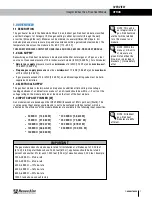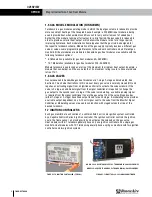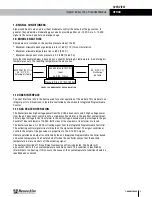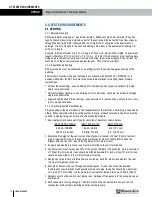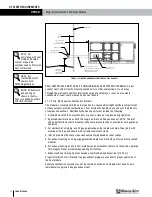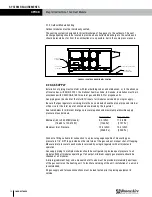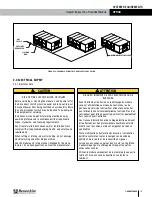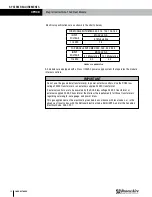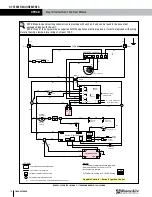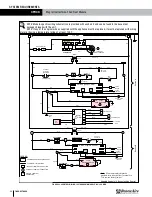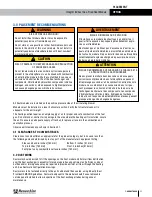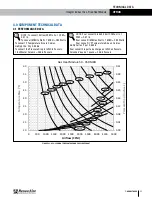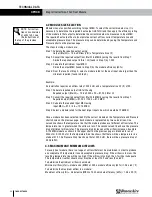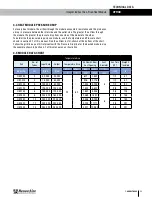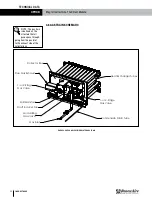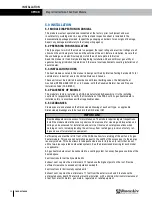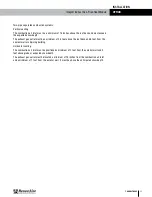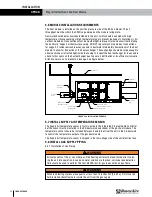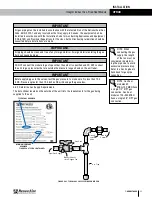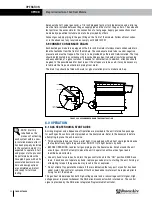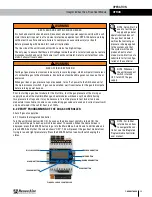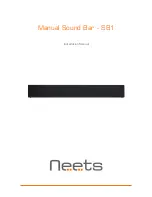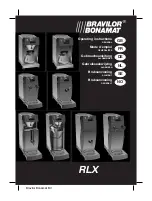
21
1.800.627.4499
Integral Indirect Gas-Fired Heat Module
OPTION
3.0 PLACEMENT RECOMMENDATIONS
All heat modules are installed on the positive pressure side of the circulating blower.
Modules must be installed in a level, horizontal position. Verify that structural support is
adequate for the unit weight.
The heating section requires an ample supply of air for proper and safe combustion of the fuel
gas. Do not block or obstruct air openings to the area where the heating unit is installed. Locate
the unit to ensure an adequate supply of fresh air to replace air used in the combustion and
ventilation process.
Observe unit clearances as shown in Section 3.1.
3.1 CLEARANCES TO COMBUSTIBLES
Clearances to combustibles as appropriate for the product category, but in no case less than
the following unless determined by test as part of the manufacturer's equipment listing:
Sides and back: 6 inches [152 mm]
Bottom: 2 inches [51 mm]
Top: 6 inches [152 mm]
Front: 36 inches [914 mm]
Vent pipe to any combustible surface: 6 inches [152 mm]
3.2 DUCTWORK
Ductwork should be sized to fit the openings on the heat module. Uniform airflow distribution
over the heat exchanger is essential for proper operation and optimum unit efficiency. Use of
baffles and/or turning vanes may be required to provide uniform air flow through the heating
unit. See Ductwork Configuration drawings.
Ductwork is to be fastened directly to the unit cabinet and then sealed, using Industry Best
Practices/SMACNA guidelines. Ductwork adjacent to the module should have a removable
service panel installed to allow inspection of the heat exchanger tubes during annual
maintenance.
WARNING
RISK OF FIRE OR EXPLOSION!
Do not install heat module where it may be exposed to
potentially explosive or flammable vapors!
Do not store or use gasoline or other flammable vapors and
liquids in the vicinity of this or any module. Do not install in
potentially explosive atmosphere laden with dust, sawdust
or similar products.
RISK OF DAMAGE TO HEAT EXCHANGER AND PRODUCTION
OF DANGEROUS GASES
Do not locate module in areas where corrosive vapors are
present in the atmosphere or can be mixed with combustion
air entering the module. Airborne contaminants can cause
corrosion and shorten the life of the heat exchanger and
components. Chlorinated hydrocarbon compounds (chlorine,
hydrogen, and carbon), when exposed to high temperatures
can cause phosgene gases, which are hazardous.
CAUTION
AVERTISSEMENT
RISQUE D’INCENDIE OU D’EXPLOSION
N'installez pas le module de chauffage à un endroit où il
pourrait être exposé à des vapeurs potentiellement explo-
sives ou inflammables.
Ne stockez pas et n'utilisez pas d'essence ou d'autres va-
peurs et liquides inflammables à proximité de ce module ou
de tout autre module. Ne pas installer dans une atmosphère
potentiellement explosive chargée de poussière, de sciure
de bois ou de produits similaires.
RISQUE DE DOMMAGES À L'ÉCHANGEUR DE CHALEUR ET À
LA PRODUCTION DE GAZ DANGEREUX
Ne pas placer le module dans des zones où des vapeurs
corrosives sont présentes dans l'atmosphère ou peuvent
être mélangées avec de l'air de combustion entrant dans le
module. Les contaminants en suspension dans l'air peu-
vent provoquer la corrosion et réduire la durée de vie de
l'échangeur de chaleur et des composants. Les composés
d'hydrocarbures chlorés (chlore, hydrogène et carbone),
lorsqu'ils sont exposés à des températures élevées, peuvent
provoquer des gaz de phosgène dangereux.
ATTENTION
PLACEMENT

